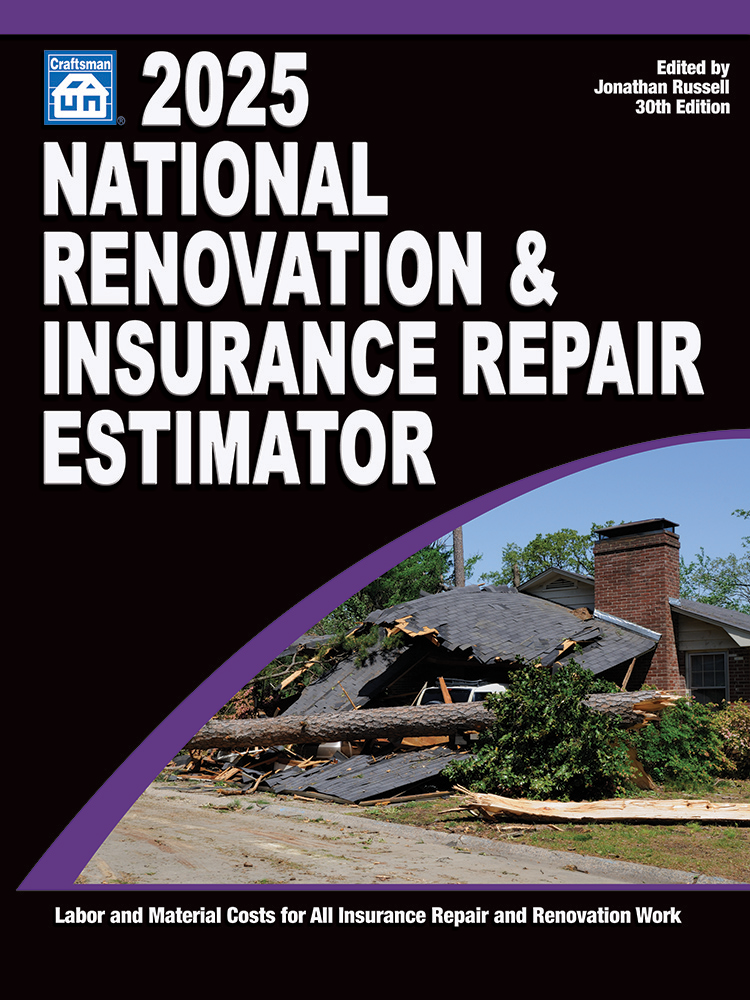A Cleaning/Restoration Contractor’s Insurance Needs: Debunking the Urban Myths






In the restoration business, the value of the viable business is the biggest asset in the retirement portfolio of the owner. This article is focused on preserving the assets of the business owner and anyone who has an interest in keeping the business going.
After ten years of selling business liability insurance policies to cleaning and restoration firms, I have figured out what the average American firm looks like. I also know from reading hundreds of actual insurance policies there are coverage gaps in liability insurance policies created by newly introduced exclusions for pollution that apply to losses in any way related to the likes of fungus, mold, bacteria, Category 3 water, pollutants, contaminants, irritants, lead, asbestos, silica and professional services. Without a specially modified liability insurance program designed specifically from the ground up to deal with the newly uninsured loss exposures, the firm is at risk any time there is a job or a loss associated with these materials or services.
Very few owners are aware of this. No owner of a firm would intentionally bet their retirement every day if they could avoid doing so. And no insurance agent would set out to sell an insurance program with material gaps in coverage. This article lays out some tips on how to fix the current at-risk situation for 90% of the cleaning and restoration firms in the US.
Every business in America buys liability insurance policies. But what is unusual in the cleaning and restoration industry is how many fundamental insurance coverage defects there are in the liability insurance policies sold to these firms today. Although there can be a number of coverage glitches in insurance policies, it is a series of pollution-related loss exclusions that are of the most concern.
When insurance companies reacted to the “toxic mold” scare of 2002, they quietly slipped mold/bacteria (includes Category 3 water) exclusion endorsements into everyone’s property and liability insurance policies. The insurance companies did not tell the insurance agents or claims adjusters what the new exclusions did to the coverage in the insurance policies they were selling or how to fix any resulting coverage gaps that may be imposed by the new exclusions. Actually the insurance companies had not figured out the ultimate impact of the new exclusions related to mold and bacteria before they slammed the exclusions into the market place in 2005. Most insurance companies are still unaware of the far reaching effects of these exclusions as evidenced by the number of mold damage losses that are paid as water damage claims by uninformed claims adjusters. However when there is a big dollar claim involved, the lawyers at the insurance company get involved and they do know how the exclusions should work. The case law on fungus/bacteria exclusions is just coming out of the courts today from insurance policies sold in 2005.
Because the insurance companies never produced any literature on the impact of the new exclusions for various pollutants including mold and bacteria, insurance agents - through no fault of their own - were left uninformed on how to advise their clients about the basic insurance coverage fixes necessary to address the newly uninsured loss exposures in the cleaning and restoration industry.
To help put the indoor environmental liability insurance coverage issues related to your business into perspective, I will clarify some of the most common urban myths regarding insurance on losses related to the likes of fungus, mold, water damaged drywall, bacteria, Category 3 water, black water, asbestos, lead, silica, pollutants, odor, irritants, contaminates and professional services.
The bottom line is that if you get involved in a loss involving any of the aforementioned cases, the loss can get to be real expensive real fast and the coverage provided in the standard insurance policies carried by you, any subcontractor working on your behalf and the insurance your customer has in place is highly suspect in its obligation to pay a claim.
Urban Myths Involving Liability Insurance
1. Pollution exclusions only apply to hazardous waste: Not true. This is a persistent myth not remotely based on fact. Pollution exclusions apply to contaminates and irritants, any form of waste (hazardous and non-hazardous) and a long list of other things. Odors, and a lot of other things, are excluded by pollution exclusions. If your “green” cleaning solution forces the occupants of the building to evacuate, you will be staring down the barrel of a pollution exclusion.
2. Mold exclusions only apply to mold contractor: Mold exclusions do apply to mold contractors. They also apply to any contractor who can create a water loss in a building that results in a speck of mold growth. To the utter surprise of most insurance agents, the exclusion for mold also applies to bacteria. Therefore the “mold” exclusion also applies to all of your Category 3 water jobs. It is the Category 3 water job that is not insured in most of the general liability (GL) policies sold to cleaning and restoration firms, not just a loss resulting from Category 3 water.
3. Only mold contractors need Contractors Pollution Liability (CPL) insurance. This is another persistent myth that is simply not right. The need for CPL insurance is driven by the long list of excluded “environmental” causes of loss on the GL policy mentioned above. Unfortunately it is almost impossible for insurance agents to figure the insurance coverage gap out with the information that is available to them.
4. My insurance agent knows how to get me the insurance I need: That is true in most cases, but is likely a myth when it comes to environmental risks. Here is the reality: When it comes to fungus/bacteria /pollution/etc. exclusions, there is no place for your insurance agent to even learn about these exclusions. I have not been able to find a single reference to environmental insurance or the subset of it, Contractors Pollution Liability insurance, in any state licensing exam or licensing course of study anywhere in the US. In the IICRC S500 and S520 guidelines there is more information on CPL insurance than in any information available to insurance agents regarding insuring cleaning and restoration contractors. Some insurance agents are pretty sharp. Try this to self diagnose your insurance coverage for environmental risks. Tell your insurance agent that you occasionally are called in to clean up Category 3 water, that Category 3 water is Category 3 because of the bacteria in it, and that all water in a drain pipe in a home is considered Category 3 water. Then ask if you have GL insurance for that work. The answer should be “no.” If the answer is “yes,” you are covered.
5. I have purchased a CPL policy to protect my firm, so I am OK on coverage for that long list of excluded items in GL insurance policies: CPL is the right idea anyway. CPL was originally intended for hazardous waste clean-up contractors working on federal Superfund sites. CPL was not originally designed for use by cleaning contractors. As a result, almost all CPL policies need some modifications to get the policy to function properly for a cleaning firm. We know from our risk management consulting and expert witness work that 80% of CPL policies sold to cleaning/restoration firms contain fundamental coverage flaws relative to what the firm does for a living. Some are a lot more severe than others
6. I am a nice person and have purchased my insurance from the same company for years - they will cover me no matter what the exclusions say: That is more wishful thinking than a myth. Bottom line is the breadth of your insurance coverage is inversely related the size of the loss. In other words for little losses the claims person may not read the exclusions very closely.
7. CPL insurance costs too much for our firm: CPL insurance is relatively expensive, that is not a myth. Insurance companies have lost over $1 billion trying to figure out how to write pollution insurance profitably. In more than half of the cases, the person who is telling me they are uninsured because CPL insurance is unaffordable is operating on bad information regarding the cost of CPL insurance. It is a common myth that the minimum cost of a CPL policy is $10,000. That was true more than 10 years ago but has not been true for the last 10 years. Here is the reality on the cost of liability insurance on a cleaning firm. A good quality combined GL and CPL policy (some combined policies even include professional liability for an IICRC Certified Firm) can be purchased for about $4,200 as an out-the-door price. That minimum premium would insure a firm doing up to about $600,000 in annual cleaning revenue. Give up mold/bacteria coverage (not recommended) and the out-the-door premiums can be as low as $3,500 for combined GL/CPL/Professional policies. For simple CPL insurance, it is likely to cost $3,400 out-the-door for a policy with coverage for mold/bacteria. To put things into perspective, a company running a $5-million annual revenue firm should be able find CPL insurance by itself for about $7,000. So the real insurance affordability issues are on restoration firms with less than $400,000 in annual sales. People do not know this but the cost of mold insurance has gone down 90% in the last 5 years. If you are one of the 70% of restoration firms going to work without CPL and professional liability insurance, it would be a good idea to fix that hole in your insurance coverage.
8. I am a contractor I do not need professional liability insurance: That is usually correct for a contractor, but is not right for anyone working as a drying contractor or even subbing out mold work. The increased need for professional liability insurance can be found by reading the front cover of the IICRC S500 and S520 Professional Standards and Guidelines for water and mold. Professional liability insurance coverage is available in a customized insurance package designed for cleaning and restoration firms. Virtually all GL and CPL policies exclude professional services today. There is no reason to be uninsured for professional liability losses today.
This is not an urban myth: If you cannot afford the insurance, you cannot afford the loss. If your operations involve potential exposures to fungus, mold, water-damaged drywall, bacteria, Category 3 water, black water, asbestos, lead, silica, pollution, odor, irritants and contaminates, you clearly need CPL insurance on your firm. If you are in the drying or mold remediation business, or even if you sub out your mold work, you need professional liability insurance.
Looking for a reprint of this article?
From high-res PDFs to custom plaques, order your copy today!











